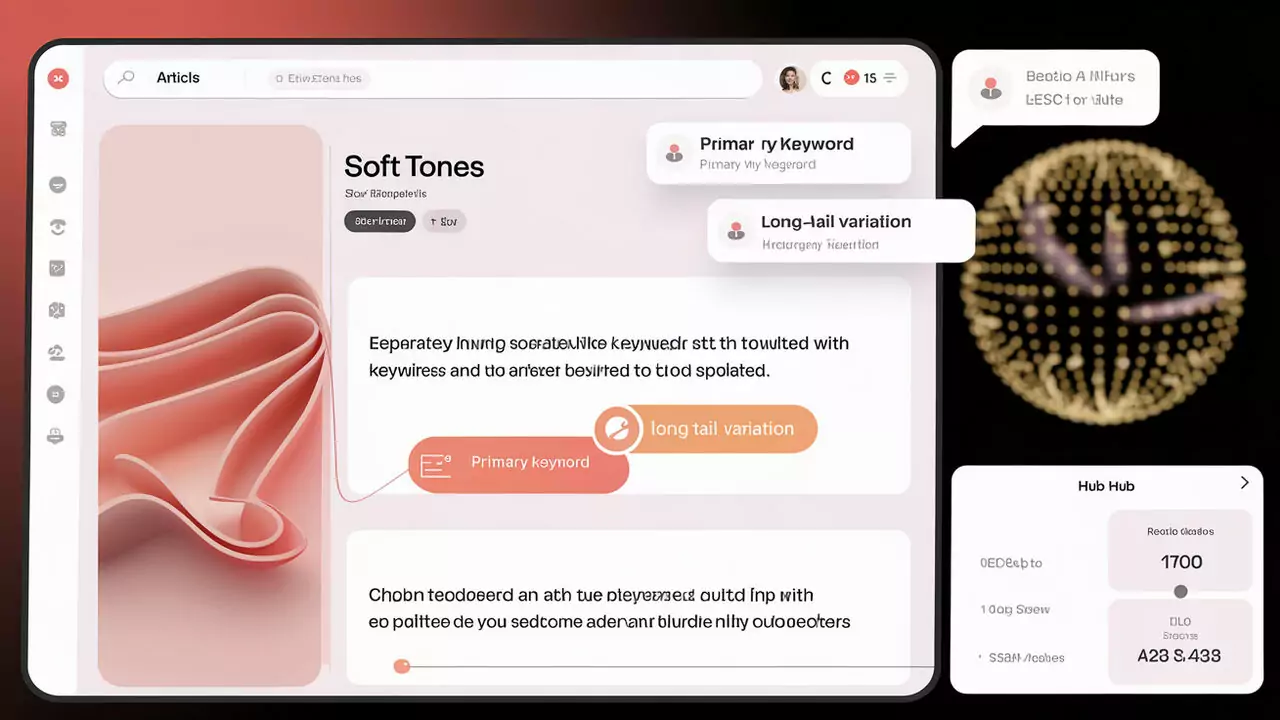
Integrating Keywords Seamlessly into Hub Content: A Practical Guide to Overcoming Inefficient Keyword Targeting
Embrace Natural Language for Better Engagement and SEO
What You’ll Learn
- Effective methods to incorporate keywords without disrupting your narrative.
- Strategies for maintaining natural content flow and boosting SEO performance.
- A step-by-step guide for revising content to accommodate organic keyword placement.
- How to compare and measure the impact of forced versus seamless keyword integration.
Problem Definition: Disjointed Keyword Insertion in Hub Content
The practice of inserting keywords awkwardly can disrupt your content’s natural flow. Overly forced placements often result in text that feels clunky and detracts from reader engagement. Moreover, this approach diminishes your content’s relevance for search engines, as algorithms prefer well-integrated, natural language.
When keywords are inserted without careful planning, they break the cohesive narrative that your audience expects. This not only reduces readability but also signals to search engines that the content may be overly optimized, potentially jeopardizing your SEO efforts.
For a broader context on keyword fundamentals, learn the basics of keyword relevance in hub frameworks as a foundation.
Impact Assessment: The Downsides of Forced Keyword Integration
Forced keyword integration can have several negative repercussions. It often results in content that not only feels unnatural but may also provoke algorithmic penalties related to keyword stuffing. Search engines are increasingly sophisticated in identifying content designed solely for SEO rather than providing value to the reader.
This approach can dilute the overall quality of your hub content, weakening your brand’s credibility and lowering user engagement. Strategic content that focuses on readability and context is essential for building trust with your audience.
For further insights on maintaining and monitoring keyword performance over time, see our analysis on keyword performance for continuous optimization.
Solution Framework: Strategies for Natural Keyword Integration
Adopting a strategic approach for keyword integration means embedding them into sentences where they naturally fit, rather than forcing them in unnaturally. Consider using a blend of primary keywords along with synonyms and related phrases to enhance context. This strategy not only aligns with search engine expectations but also enriches your content’s semantic value.
For instance, if you’re targeting the keyword “hub content optimization,” incorporate variations like “content refinement,” “organic keyword placement,” or “natural SEO strategies” to diversify your content. This form of integration allows for smoother transitions and contextually rich narratives.
If you’re intrigued by niche targeting techniques, explore how long-tail keywords enhance targeting for niche hub topics.
Implementation Guide: Step-by-Step to Seamless Integration
Begin by auditing your existing hub content to identify areas where keyword placement appears forced or unnatural. Once these segments are identified, work on revising the text to ensure that keywords are integrated contextually. Focus on preserving the tone and flow of your narrative while weaving in relevant keywords.
- Audit your content: Read through your articles and mark sections where keywords disrupt the natural flow.
- Revise strategically: Adjust sentences and paragraphs, embedding keywords naturally without compromising readability.
- Monitor performance: Use SEO tools to track the performance metrics of the revised content, and adjust placements as needed.
As you apply these changes, you may also consider referring to industry best practices on keyword integration available on trusted SEO blogs such as Moz for additional perspective.
Comparison Table: Forced vs. Seamless Keyword Integration
| Metric | Forced Integration | Seamless Integration |
|---|---|---|
| Readability | Poor | Excellent |
| User Engagement | Low | High |
| SEO Compliance | Risk of penalties | Maintains integrity with search algorithms |
| Content Value | Diluted | Cohesive and context-rich |
This table clearly outlines how a natural approach to keyword integration contributes to better readability, user engagement, and search engine compliance. Consider customizing your metrics and further suggestions as needed.
Frequently Asked Questions
1. What is seamless keyword integration?
Seamless keyword integration refers to the strategic embedding of keywords into content in a manner that feels natural and supports readability while maintaining strong SEO performance.
2. Why is natural keyword placement important?
Natural keyword placement improves the reader’s experience by ensuring content flows smoothly, and it prevents search engines from penalizing the content for keyword stuffing.
3. How can you audit your content for keyword integration issues?
Review your content meticulously to spot awkward or forced keyword insertions and revise these sections to blend keywords naturally into your narrative.
4. What benefits come from using synonyms in keyword integration?
Incorporating synonyms diversifies your language, enhances semantic relevance, and prevents over-optimization, which together improve overall content quality.
5. How do comparison tables assist in improving keyword strategies?
Comparison tables offer a clear visualization of improvements in readability and performance, making it easier to see the impact of natural keyword integration versus forced approaches.
Recap of Key Points
This guide has covered the challenges of disjointed keyword insertion, the impact of forced keyword integration on user experience and SEO, and the practical steps needed to revise your content for natural keyword placement. Following these actionable strategies will help you produce cohesive, reader-friendly content that both engages and ranks well.
Next Article section
If you valued insights on naturally weaving SEO elements into your content, you will appreciate deeper strategies in our upcoming discussion on advanced content hubs. The article delves further into how seamless integration can elevate your overall content strategy and performance. Identifying Gaps in Your Backlink Profile via Content Hubs serves as the next step in tailoring your content for both search engines and your audience.
Ready to enhance your SEO strategy with more innovative traffic methods? Join our free ‘Fightback Traffic Systems‘ WhatsApp group where we cover 26 unique and underground traffic strategies, including advanced tips on Content Hubs. Connect, learn, and discuss proven strategies in a friendly community setting.
Additional Resources
For a deeper understanding of user behavior and SEO techniques, you may explore articles from reputable sources like Search Engine Land and Search Engine Journal.
